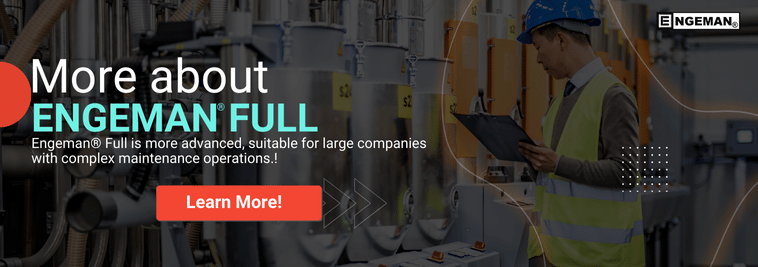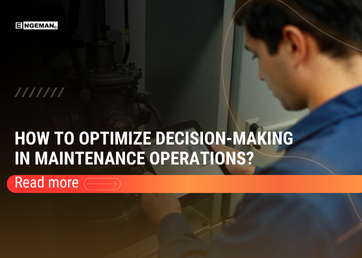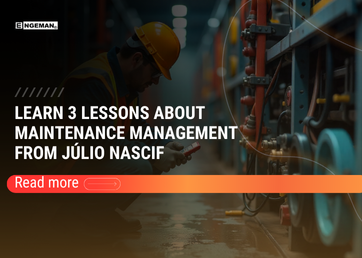Contents
What is Predictive Maintenance?
More than an action, predictive maintenance can be seen as a methodology that is part of a company’s culture. It corresponds to structured and periodic monitoring of equipment based on its condition in order to recognize its real state.
Through direct or indirect measurements and the interpretation of results, it is possible to know if a piece of equipment is working as it should or if it requires greater attention.
It is not the same as preventive maintenance, which is done to prevent failures or even accidents from occurring. In a simple way, it is as if predictive maintenance were one step before preventive maintenance. Its results make it possible to anticipate preventive actions, for example.
How does Predictive Maintenance work?
There are countless predictive action techniques. Most of them come from medical techniques. The analysis of a lubricant is similar to that of our blood. We look for various residues in it, which can tell us what is happening inside the machine. This is called ferrography. Through it, we can detect significant wear and tear in progress.
Vibration analysis allows us to analyze the alignment and correct the coupling of the parts. Ultrasonography enables the identification of surface regularity, the presence or absence of cracks, and variations in material composition.
Endoscopy, like our body, shows us what happens inside the machines. For this technique to be better used, machines need to be built properly. In the future, we will use small cameras that will be injected into the circulation of a lubrication system, and we will clearly see the existing flaws.
With thermography, we detect cracks in furnaces, coupling failures, and various frictions in reducers, in addition to those linked to the electrical aspects normally used.
And if we combine remote sensing, we will have the possibility of following the operation and life of a piece of equipment sitting at a desk in maintenance offices.
If we have so many advantages with the use of such predictive techniques, we must expand this knowledge and disseminate its use in order to achieve even better business results.
3 benefits of Predictive Maintenance
Once you’ve figured out what predictive maintenance is, it’s very relevant to adopt it because it’s a beneficial action in many ways. When done correctly, the business consolidates effects that impact issues such as profitability, effectiveness, and safety.
The main benefits of using predictive maintenance include:
Decrease in the number of equipment failures
If preventive maintenance already helps to reduce the number of equipment failures, predictive maintenance is even more important in this regard.
It allows for a much earlier assessment, allowing appropriate actions to be taken to prevent the equipment from having its operation interrupted. With the analysis of the performance and conditions of each piece of equipment, it becomes less complex to identify if there is something that needs to be done.
Again, it’s like medicine. In predictive maintenance analytics, discovering an issue early makes it easier to resolve, and there is less risk to the equipment and operation.
This benefit unfolds into several others. The first is that, with fewer failures, downtime decreases. As a result, productivity increases, since the workflow is not impaired.
There is also an increase in safety. This is because some equipment can fail at highly inopportune times or in catastrophic and unexpected ways. As a result, accidents can occur. If the machinery continues to function normally, the risks are reduced.
In addition, corrective maintenance must be undertaken less frequently. Adding this to the increase in productivity, there is an increase in profitability.
Increased equipment life
Another very important issue is that all assets that undergo predictive maintenance have a longer lifespan than those that do not undergo the process. This is because the analysis of conditions allows us to know when a certain element is not working as it should or within optimal parameters.
A battery that is constantly overheated, for example, tends to lose capacity. Through predictive identification, actions can be taken to correct the problem and increase its durability.
The main secondary benefit of this point is that there is a greater return on investment (ROI). As it will not be necessary to buy other equipment anytime soon, the business is able to have the maximum return on the expense made in the acquisition.
Reduced costs
However, one of the most outstanding elements is the decrease in costs for management as a whole. This point is so relevant because it comes from several consequences of doing such maintenance.
For starters, the reduction in failures and downtime saves the business from having to stop production, which costs money. With the increase in productivity due to the optimal use of machinery, there is a double gain in terms of cost reduction.
In addition, acting in advance is much cheaper than acting correctively. Still in the health analogy, a check-up is more affordable than the treatment of an advanced disease. Similarly, predictive analytics is cheaper than trying to fix equipment after it has failed.
Another point is that there is a reduction in expenses with the acquisition of new equipment, in addition to those resulting from work accidents. As a result, the business becomes more profitable and, above all, more competitive.
How to do Predictive Maintenance?
In addition to employing the good practices of this process, it is essential that it be very well structured. Since the intention is to do periodic monitoring, it is necessary to have good control over this.
In view of this, there are three most relevant points:
Identify the needs of the company
Within a production line or even in the execution of everyday tasks, some equipment is more important than others. Knowing this, it is essential to map which assets most need predictive maintenance, precisely because they play a critical role in the results.
Based on the previous objectives and results, select which ones will go through this process continuously. Once this is done, create a plan with periods of action according to each element.
Have a good maintenance team
It is also essential to have fully trained professionals. In addition to having the necessary knowledge, they need to have the relevant equipment to perform the predictive processes.
Therefore, whether the team is in-house or outsourced, ensure that it is fully equipped to do the desired analyses. The greater the concern with the quality of professionals, the better the results.
Count on the help of technology
Gone are the days of confusing spreadsheets. Today, companies rely on predictive maintenance software and solutions, which centralize data, automate tasks, and ensure accurate monitoring.
Through a feature like this, it is possible to control all maintenance steps and their results and create new maintenance schedules. Thus, you can ensure that nothing will be left without due attention, in addition to creating an important database about the process.
Another relevant point is that technology contributes to centralizing all data and even automating some tasks. As a result, the results tend to be even more favorable, contributing to the enterprise.
By knowing the definition of predictive maintenance and how to implement predictive maintenance in your company, you gain access to an essential tool to reduce costs, risks, and failures.
To stay updated on this and related topics, follow us on Instagram!





